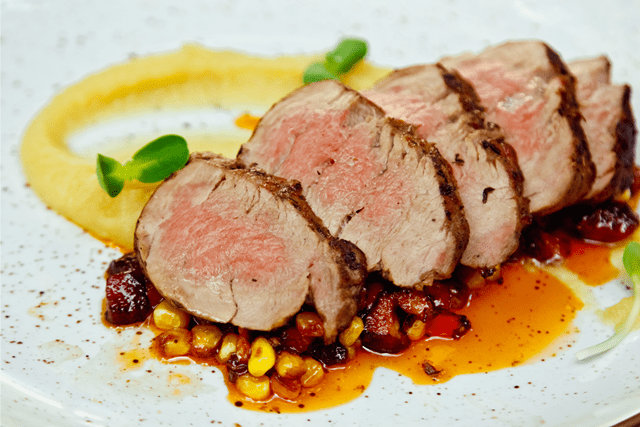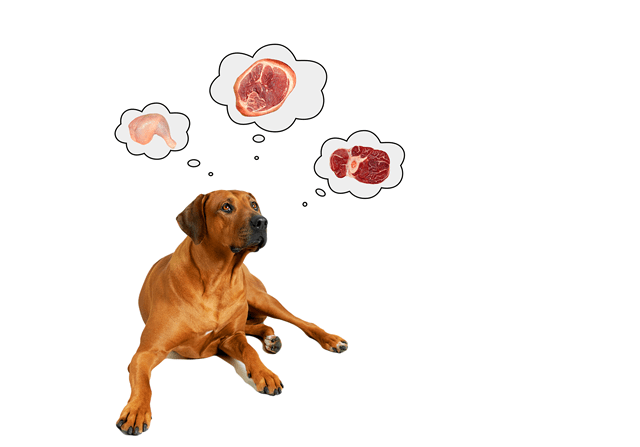Can Dogs Eat Pork – 10 Things You Should Know
For those who have pets, one of the most important things to consider is what they can and cannot eat. While this seems like a simple enough thing, many pet owners make mistakes when it comes to feeding their animals because of a lack of research.
Some foods are harmful to dogs (or cats! ) for various reasons. Whether it’s due to the ingredients or their potential health benefits, I thought I’d look into this. Read on to find out what can dogs eat and what they should not!
Is Pork Good for Dogs?
Yes, pork is considered safe for dogs to eat as long as it is well cooked. If a dog is sensitive to pork, it can lead to gastrointestinal problems and seizures.
Also, dogs may not likely react badly to pork than to other meats if they suffer from an allergy. In some cases, some dogs may even react badly to pork even if they are not allergic.
If a dog suffers from pancreatitis or intestinal paralysis, it is not a good idea to feed him pork because the pork might paralyze their digestive tract and cause further damage. Also, dogs are more likely to suffer from vomiting if they eat raw pork rather than cooked pork.

Yes, pork is considered safe for dogs to eat as long as it is well cooked. If a dog is sensitive to pork, it can lead to gastrointestinal problems and seizures.
10 Things You Should Know
Here are some of the reasons a dog owner may give his dog pork, and then explains why they shouldn’t.
1. They have been told it is bad for them.
2. It is healthy for them
3. It contains the amino acid arginine, which enhances the growth of muscle in young dogs.
4. Pork contains the essential amino acid methionine.
5. The dish should contain more carbohydrates than other proteins, and pork contains a lot of lipids.
6. They are in full agreement with the vets
7. The dish will be full of fat and they may come with a strong pork smell, which is not good for their health.
8. They are allergic to pork
9. Meat is bad for their health.
But does it have to be like this? The surprising fact is that pork meat is a very nutritious dish, containing more of the essential amino acids than other meats. The most important part of the pork, in fact, is not the meat itself but the fat.
The fat in pork contains the essential fatty acids omega-3 and -6.
Omega-3 fatty acids are good for the growth of young dogs, and also have anti-inflammatory and anti-arthritic effects.
We can therefore conclude that pigs, who are a normal part of the diet, contain a lot of essential nutrients.
10. Pork contains saturated fat.
But the meat from pigs is very nutritious and safe. Besides, it is a very rich source of amino acids, lipids, vitamins B1, B2, B6, niacin, B12, riboflavin, folic acid, thiamine, pantothenic acid, and minerals potassium, iron, zinc, and phosphorus.
How Do I Know If My Dog Has Eaten Too Much Pork
If your dog has eaten too much pork, you may notice that he is having trouble breathing, and is very bloated. If your dog is an eater of any other meat, this may be a warning sign that he has overeaten pork.
You should watch your dog closely, so that he does not consume too much. But if you see signs of vomiting or diarrhea, immediately get to the vet to take care of him.

If your dog has eaten too much pork, you may notice that he is having trouble breathing, and is very bloated.
Benefits of Giving Dogs Pork Bones
Many people believe that giving dogs pork bones is dangerous, but there are benefits to giving them pork bones.
Pork bones help clean dogs’ teeth and keep their gums healthy. Bones are a great source of calcium and phosphorus.
The reason these minerals are so important is that they help dogs’ bones grow strong and healthy.
The benefits of giving dogs pork bones can help your dog to grow strong and healthy.

What is the Safest Pork Option for My Dog?
If you’re looking for a porky treat that’s safe for your dog, lean cuts of pork are the way to go.
Tenderloin and loin chop cuts are especially good options, as they’re low in fat and still pack a flavorful punch.
Pork rinds are a popular treat, but they can actually be dangerous for your dog. If you’re looking for a safe treat, pick up some tenderloin or loin chops instead.

5 Reasons Why You Should Feed Pork To Your Dog (According To Veterinarians)
1. Pork Helps Your Dog’s Gums
As the gums become healthy, they no longer absorb the bacteria that can cause gum disease. This means that you and your pup can continue to enjoy the benefits of pork without being exposed to harmful bacteria.
2. Pork Can Help Your Dog’s Teeth
Dogs are considered omnivores. This means that they get the nutrients they need from both plant and animal sources. Pigs, which are omnivores, are a great source of protein.
Pork also has omega-3 fatty acids and protein. This means that your pup is getting the nutrients they need while also getting to enjoy some yummy taste.
3. Pork Is Great For Your Dog’s Heart
Pigs, like dogs, have the ability to heal their hearts when they are sick. In fact, researchers have found that pigs can heal their hearts when given the opportunity.
When it comes to heart health, pork is considered one of the healthiest meats around.
4. Pork Is A Source Of Fiber For Your Dog
Fiber is important for a dog’s health, especially when they are adults. Dogs need to have fiber in their diet in order for their systems to function well. Fiber from pork, like that found in bacon, can be a great source of fiber for your dog.
5. Pork Is A Great Source Of Protein For Your Dog
Your dog needs to have protein in their diet for their bodies to function properly. Protein can be found in different forms of meat, but lean pork is one of the best sources of protein for your dog. The protein found in pork also is easy for your dog to digest.
Your dog needs to have protein in their diet for their bodies to function properly. Protein can be found in different forms of meat, but lean pork is one of the best sources of protein for your dog.
Can Dogs Eat Pork Rinds And Bacon?
Dogs should not eat pork rinds or bacon because they are both high in salt and fat. Salty foods can also cause oral irritation, so dogs that eat pork rinds should be monitored for this. Other than these items, dogs can eat bacon safely.
When to Avoid Giving Your Dog Pork
There are a few instances when you should avoid giving your dog pork. First, if your dog has a history of vomiting after eating pork, avoid giving him the food in question. If your dog has a grain allergy, pork may trigger it.
Dogs can also have an upset stomach if they eat pork that has not been thoroughly cooked.
Finally, dogs with the Protease Inhibitor Deficiency (PID) disease should not eat pork because it can upset their digestion.
How Much Pork Can I Serve my Dog?
Many experts suggest offering your dog ¼ to ½ cup of cooked or raw pork per meal. If you want to try an experiment, serve the same amount of beef or chicken, and see if it makes a difference.
After all, if your dog can eat six chicken legs a day, why not serve him some pork as well?
There is no definitive answer to this question as it will depend on the size and breed of your dog, as well as how much pork your dog typically consumes.

What are some Alternatives to Pork for Dogs?
Dogs are carnivores and as such, pork is not the best protein source for them. Other choices are venison and duck, which are both excellent sources of protein.
Most holistic vets suggest lean chicken or turkey as a good alternative to pork for dogs. The best alternative meat for dogs would be a meat like duck or venison.
Other meats that you can include in your dog’s diet are beef and lamb.
Can I Cook Pork for my Pet?
Cooking pork for your pet is a great way to ensure they are getting the nutrients they need. When you cook your pet’s meal, the meat is hot and dry so it can be easily digested.
Some dogs may have an issue with their digestive system and getting enough nutrition from raw meats, but there are ways to prepare it so they can still get the nutrients they need.
How do I Cook Pork for my Dog?
To cook pork for your dog, preheat the oven to 375 degrees Fahrenheit. Cut the pork into small pieces and place them in a baking dish.
Bake the pork for 25 minutes or until it is cooked through. After 25 minutes, check the pork and if it is cooked through, remove it from the oven. If it is not cooked through, return it to the oven for 5 more minutes.
The time of cooking will vary based on the size of the piece of pork that you have. If you want to prepare your dog’s meal in advance, cook the pork first and then place it in a plastic bag or tupperware container.
Keep it in the refrigerator and take it out 15 minutes before you plan to cook your dog’s meal.
How to Feed Pork to Your Dog
If you’re looking to add pork to your pup’s diet, it’s important to take a few things into consideration.
First, make sure to remove any fat from the pork and cook it through. Additionally, be mindful of portion size – start with small pieces and see how your pup reacts.
Give your dog the option of eating raw pork and cooked pork. This can be by separating them or by letting your dog lick one, smell it, taste it, then allow him to eat the other.
Final Thoughts: Can Dogs Eat Pork
A lack of research often leads to pet owners making mistakes when it comes to feeding their animals. One of the most important things to consider is what they can and can not eat, yet this can be difficult for pet owners to know what is and is not safe for their dogs. In this article, we will explore reasons why a dog owner may give his dog pork, and then explain why they should not.
Further Reading:
Rhodesian Ridgeback: The Lion Fighter
1000 Interesting Dog Names and their Meaning
Cane Corso: Every Information About This Breed
Golden Retriever: Everything You Need To Know About This Breed
25 Cutest Dog Breeds to Keep as Pets
Rottweiler Pitbull Mix: Every Information
